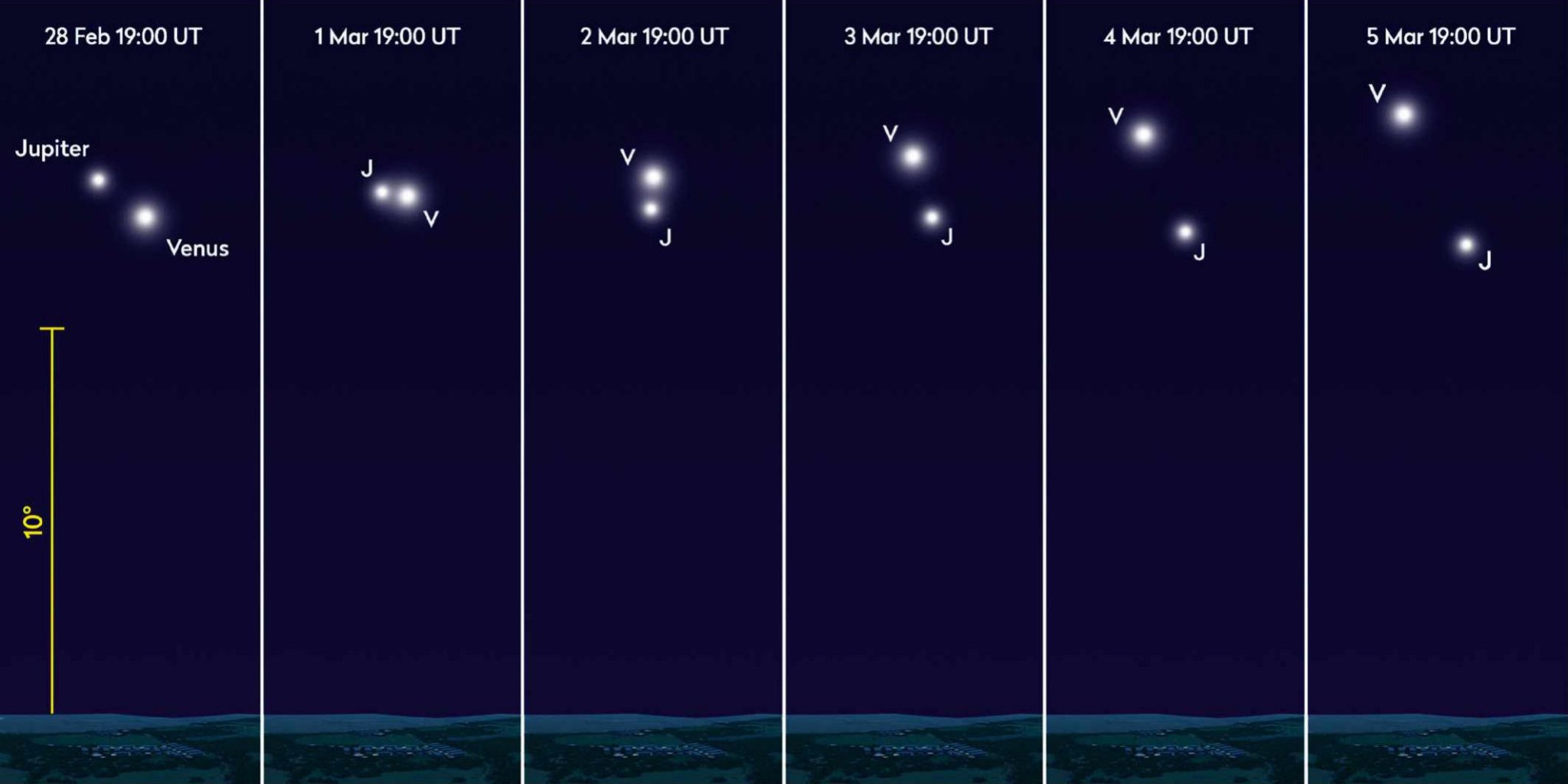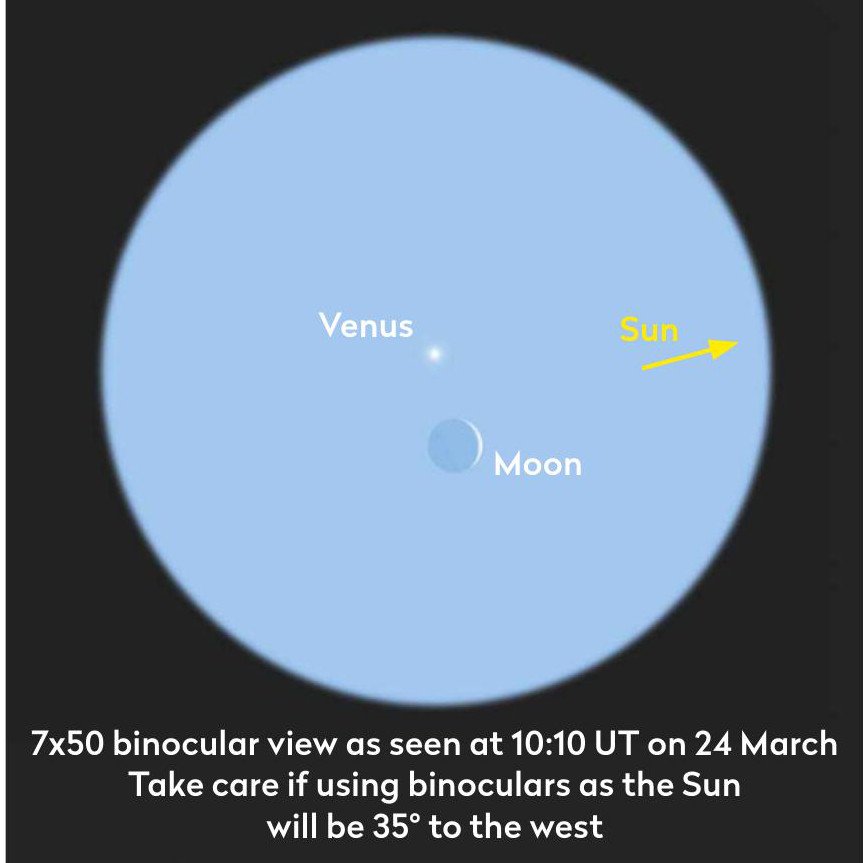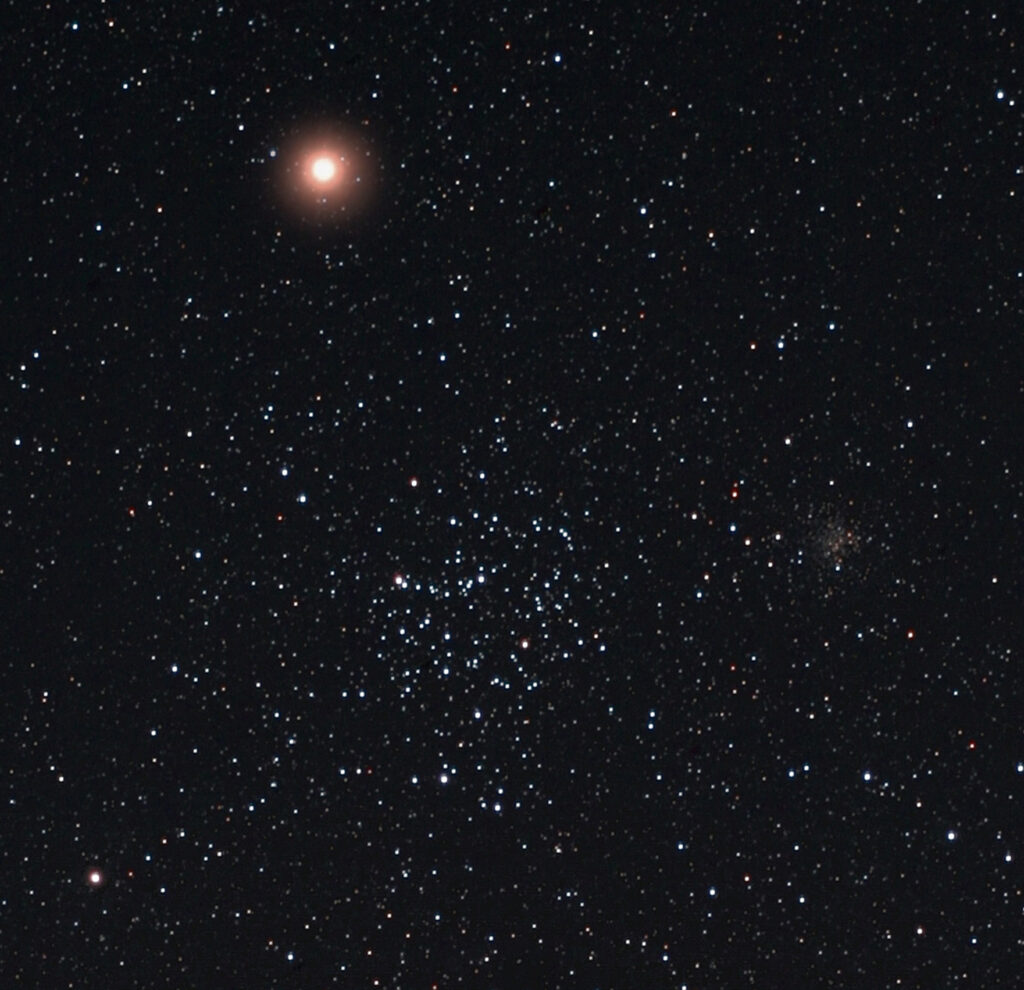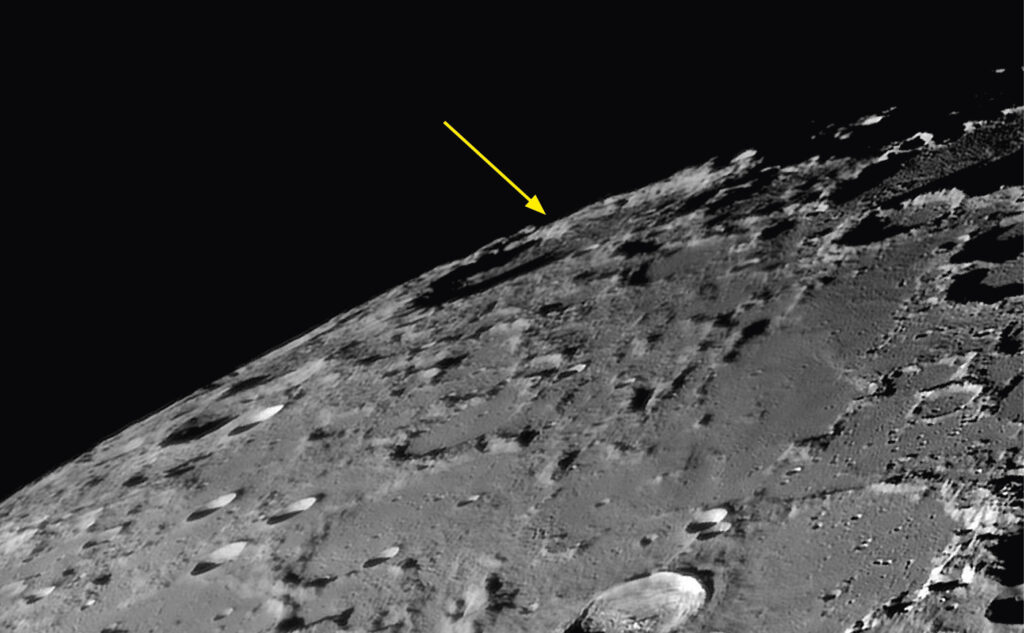The top sights to observe or image this month
DON’T MISS
Planetary conjunctions
BEST TIME TO SEE: Various times throughout the month
RECOMMENDED EQUIPMENT: Binoculars or small/medium telescope

March plays host to a number of interesting conjunctions, starting off in spectacular fashion with a very close evening encounter between Venus and Jupiter. For the UK, the closest evening approach occurs on 1 March when the planets appear separated by just 36 arcminutes before setting.
The best view is around 19:25 UT when they are about 11° up and 38 arcminutes apart under dark sky conditions. Jupiter will be bright at mag. –1.9, but will be completely outshone by mag. –3.9 Venus.
Through a telescope, both can be seen in the same field, in a low-power eyepiece. As 38 arcminutes is about one-and-athird times the apparent diameter of the Moon, if you have an eyepiece that shows the Moon with plenty of space around it, this should show both planets clearly.
Venus is emerging into the evening sky after inferior conjunction on 22 October 2022. Consequently it is on the far side of its orbit and appears relatively small at 12 arcseconds with a gibbous phase of 85%. Jupiter will look almost three times larger at 34 arcseconds. On the evening of 1 March, all four Galilean moons are on display too, lining the event up for a great astrophoto. Venus edges further east on the evening of 2 March, remaining close to Jupiter. At 18:15 UT, just after sunset from the centre of the UK, the pair are 45 arcminutes apart. The sky will still be light but these bright planets fare well.

If you can locate Venus shortly after the pair rise on 2 March, say around 09:00 UT, you’ll be able to catch them in a daylight sky at their narrowest separation of 30 arcminutes. Then at 10:00 UT during the morning of 24 March, Venus appears 57 arcminutes north of a slender 9%-lit waxing crescent Moon, 24° above the eastern horizon.
Venus’s eastward march has it pass just north of Uranus on 30 and 31 March. On the evening of 30 March, mag. +5.8 Uranus appears 1.2° south (below left from the UK) of Venus at 21:40 BST (20:40 UT). The following evening the distance increases to 1.7°, Uranus appearing south and slightly west (below and slightly left, from the UK) of Venus on this date.
Finally, on 26–29 March mag. –1.9 Jupiter and mag. –1.3 Mercury have a series of close evening encounters, coming closest on 27 and 28 March (1.5° then 1.6° apart), low above the western horizon 30 minutes or so after sunset.
Mars passes M35
BEST TIME TO SEE: 27–31 March, 21:40 BST (20:40 UT)
RECOMMENDED EQUIPMENT: Binoculars or small/medium telescope

As Mars recedes from Earth, its telescopic appearance wanes. At the start of March, the Red Planet shines at mag. +0.4, presenting an apparent disc measuring 8 arcseconds across. However, by the end of March Mars will dim to mag. +1.0 and shrink to just 6 arcseconds across.
Although this makes it harder to observe and image, through binoculars or a widefield telescope there are still things to look out for. At the start of March, Mars is in Taurus, between the Bull’s horns, moving prograde, or east, against the background stars. Its travels take it from Taurus and into Gemini towards the end of the month, ahead of an encounter with the beautiful binocular open cluster, M35, around 2,970 lightyears away.
From the UK, Mars maintains a decent altitude under dark skies all month, ideal conditions for viewing the encounter. The action starts on 27 March, when mag. +0.9 Mars is joined by a 37%-lit waxing crescent Moon to the south of the star Elnath (Beta (β) Tauri) at 21:40 BST (20:40 UT). At this time, Mars will be 8.2° east of the Moon and 1.7° northwest of M35. Just before they all set, the Moon–Mars distance will have decreased to 6.1°, Mars also getting a tiny bit closer to the cluster, the distance now being 1.6°. separation of the two being 1.4°. On the evening of 29 March, the now waxing gibbous Moon leaves the scene, being closer to the twin stars, Castor (Alpha (α)
On the evening of 28 March at 21:40 BST (20:40 UT), the Moon’s phase will be 47%-illuminated or virtually first quarter, its disc now located 3.8° northeast of Mars. The planet will also be nearer the star cluster, the centre-to-centre Geminorum) and Pollux (Beta (β) Geminorum). Mars will appear 1.2° north of M35, a separation repeated on the night of 30 March. On 31 March, the planet slowly separates from the cluster, now appearing 1.4° from M35’s centre.
Favourable northern lunar libration
BEST TIME TO SEE: Morning sky, 13–18 March
RECOMMENDED EQUIPMENT: Small/medium telescope

From Earth, the Moon appears to wobble. Known as libration, this effect is caused by the Moon’s elliptical and tilted orbit. It allows us to see more of the Moon’s tidally-locked globe than you’d expect, revealing 59 per cent of the lunar surface over time. When one edge of the Moon tilts favourably towards Earth, extra features roll into view. However, to see them at their best, the phase has to be optimal too.
In mid-March, the waning Moon presents good libration prospects for observing the northern region. The evening terminator is also well-positioned, optimising the view. You’ll need to start observing in the morning sky from 13 March. There is a catch through, as morning Moons are poorly placed at this time of year, hampered by low altitude.
On 13 March, the north polar libration is slight, increasing noticeably as the Moon moves into its waning crescent phase.
This will bring features such as 111km Hermite and 177km Rozhdestvenskiy into view. Altitude will be an issue, something which highlights why libration timing can be tricky. In order to get a good view, libration needs to be favourable for the area of interest, the phase right, the Moon well-placed and the weather fair.